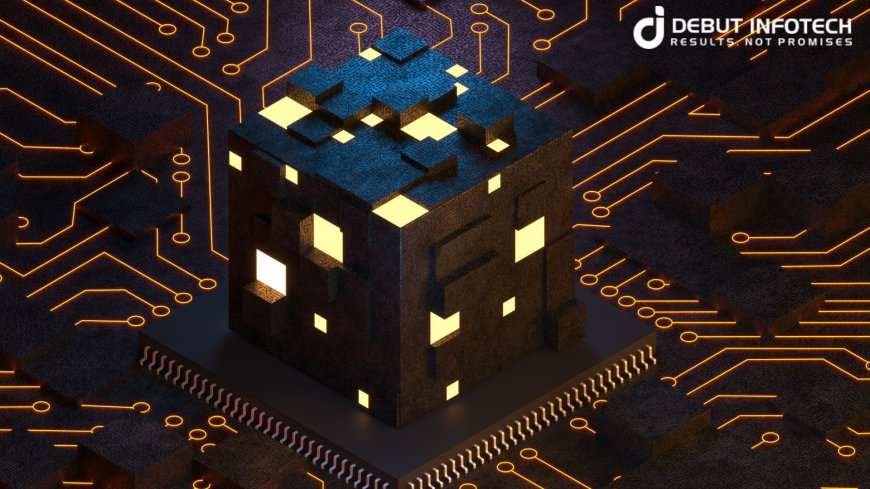What Is Polygon Blockchain Development? Learn More Here

What is Polygon?
Polygon is a decentralized protocol and framework for building and connecting Ethereum-compatible blockchain networks. It provides developers with the tools to create scalable dApps while benefiting from the security and decentralization of the Ethereum blockchain. Polygon blockchain architecture consists of a set of Layer 2 scaling solutions, including Plasma chains, zk-Rollups, and optimistic Rollups, which enable faster and cheaper transactions compared to the Ethereum mainnet.
Key Features of Polygon
-
Scalability: Polygon significantly enhances the transaction throughput of Ethereum by enabling faster processing times and reducing gas fees. This makes it easier for developers to build and deploy dApps without the constraints posed by Ethereum’s congestion.
-
Interoperability: One of Polygon’s core strengths is its ability to connect various Ethereum-compatible networks. This interoperability allows dApps to communicate and interact seamlessly across different blockchains, fostering a more integrated ecosystem.
-
User-Friendly Development: Polygon provides a comprehensive set of developer tools, including SDKs and APIs, making it easier for developers to create and launch dApps. The familiar Ethereum development environment allows developers to leverage existing skills and resources.
-
Security: By leveraging Ethereum’s security model, Polygon ensures that the dApps built on its platform benefit from a high level of security. Developers can choose between different security models based on their specific needs.
-
Flexible Architecture: Polygon’s architecture supports a variety of scaling solutions, allowing developers to choose the best approach for their specific use case. This flexibility enables a wide range of applications, from gaming to finance.
Benefits of Polygon Blockchain Development
-
Lower Transaction Costs: One of the significant barriers to using blockchain technology is high transaction fees. Polygon reduces these costs, making it economically feasible for users to interact with dApps.
-
Enhanced User Experience: The faster transaction speeds and lower fees lead to an improved user experience. Users can enjoy seamless interactions with dApps, which is crucial for fostering adoption.
-
Rapid Development Cycle: With the available tools and documentation, developers can quickly prototype and deploy their applications. This rapid development cycle encourages innovation and experimentation.
-
Access to Ethereum’s Ecosystem: By building on Polygon, developers gain access to the vast ecosystem of Ethereum, including DeFi protocols, NFTs, and other dApps, providing greater opportunities for collaboration and integration.
-
Support for Diverse Use Cases: Polygon supports a wide range of applications and technologies, including DeFi platforms, blockchain technology gaming, NFTs, and supply chain solutions. This versatility allows developers to tap into various markets and user needs.
Getting Started with Polygon Development
Step 1: Understand the Polygon Architecture
Before diving into development, it’s essential to familiarize yourself with Polygon’s architecture, including its different scaling solutions like Plasma and zk-Rollups. Understanding how these solutions work will help you make informed decisions about which approach to use for your dApp.
Step 2: Set Up Your Development Environment
-
Install Required Tools: Ensure you have the necessary tools installed, such as Node.js, npm, and Truffle or Hardhat, which are popular development frameworks for building Ethereum-compatible dApps.
-
Choose a Wallet: To interact with the Polygon network, you’ll need a wallet that supports the Polygon ecosystem, such as MetaMask. Make sure to configure it to connect to the Polygon network.
-
Connect to the Polygon Network: Use the Polygon RPC endpoints to connect your wallet and development environment to the Polygon network. This will enable you to deploy and test your smart contracts on the Polygon blockchain.
Step 3: Develop Your dApp
-
Smart Contract Development: Write your smart contracts using Solidity, the programming language for Ethereum smart contracts. Make use of the existing libraries and frameworks to simplify the development process.
-
Frontend Development: Create a user-friendly interface for your dApp. You can use frameworks like React or Vue.js to build a responsive frontend that interacts with your smart contracts.
-
Testing: Thoroughly test your dApp on the Polygon Mumbai testnet before deploying it to the mainnet. This will help identify and resolve any issues before going live.
Step 4: Deploy Your dApp
Once you’re satisfied with the functionality and performance of your dApp, deploy it to the Polygon mainnet. Ensure that you monitor the application for any issues and gather user feedback for future improvements.
Step 5: Engage with the Community
Join the Polygon community through forums, social media, and developer groups. Engaging with the community can provide valuable insights, resources, and support as you continue your development journey.
For more information you can read the our latest blog " why is blockchain important"
Conclusion
Polygon blockchain development is transforming the way developers build and deploy decentralized applications by providing a scalable, efficient, and user-friendly environment. By leveraging Polygon’s unique features, developers can create dApps that not only meet the needs of users but also contribute to the growing ecosystem of Ethereum-compatible networks. As the demand for decentralized solutions continues to rise, Polygon stands out as a powerful platform that empowers developers to innovate and create impactful applications in the blockchain space. Whether you’re a seasoned developer or just starting, exploring Polygon’s capabilities can unlock new opportunities in the world of blockchain development.
